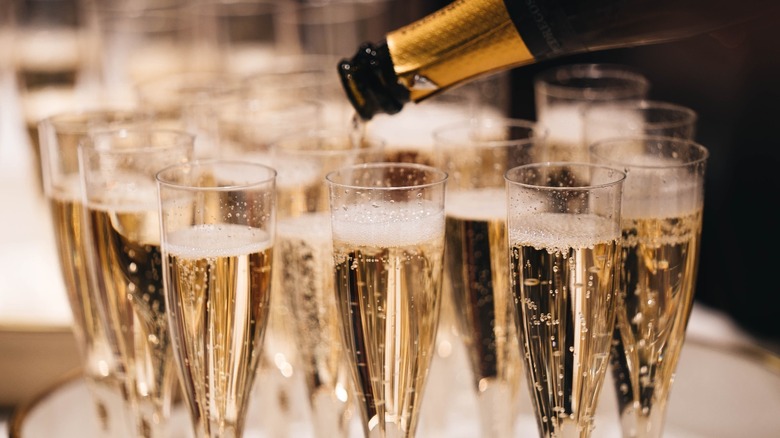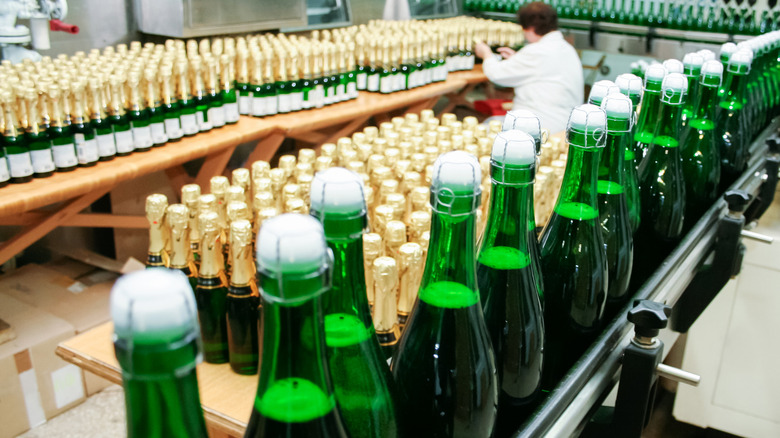Sparkling Wine Vs Champagne: What's The Difference?
If you need a good cocktail party conversation starter for your next social gathering, drink in some of these facts about the differences between Champagne and sparkling wine. The variations in these bubbly libations may be imperceptible to the untrained vintner's eye or discerning taste buds, but there are important distinctions setting Champagne and sparkling wine apart, particularly in respect to where and how they are made.
In essence, all Champagne is sparkling wine but not all sparkling wine is Champagne, per Food & Wine. More specifically, according to WineCountry, Champagne is wine "named after the region where it is grown, fermented, and bottled: Champagne, France." Under European law, sparkling wine can only legally be labeled as true Champagne if it is produced within 100 miles of this region, located in the northeastern part of France near Paris.
Champagne's production process is strictly regulated, and only 7 distinct grapes are allowed, mainly Pinot Noir, Pinot Meunier, and Chardonnay. Crafting Champagne requires a "special two-step, in-bottle fermentation process" called "methode traditionelle," which is highly labor-intensive (via Southern Living). Rigorous standards control nearly every aspect of production, from how grapes are grown to the way they are harvested and processed.
Champagne has become synonymous with sparkling wine, similar to the way some people associate Kleenex with tissues or Band-Aids with eponymous adhesive bandages, even though there are numerous other brands. It is also inextricably linked with royalty and festive celebrations, like New Year's Eve.
Sparkling wine production
Unlike Champagne, sparkling wine is made all over the world, with examples including Prosecco from Italy and Cava from Spain, per Food & Wine. Both Prosecco and Cava are produced using different grape varietals than Champagne, Glera, and Macabeu, respectively. Moreover, Cava is manufactured in tanks, as opposed to Champagne's in-bottle fermentation process.
A number of sparkling wines are produced in the U.S. as well, in areas such as Napa and Sonoma. Southern Living notes that some American-made sparkling wines even use the same grapes and traditional method as Champagne, but because they are not produced in the Champagne region of France, designating these products as Champagne is technically a misnomer. Champagne and sparkling wines also possess unique flavor characteristics and distinct aromas deriving from their varying soils and climate. Each has its own sense of place that contributes to its nuances in taste and mouthfeel.
Affordability is another difference. Sparkling wines like Prosecco and Cava are generally lighter on your wallet than Champagne, which is more expensive due to its labor-intensive production method. In an interview with Mashed, Eataly Las Vegas General Manager of Beverage Marshall Altier said one reason Prosecco is increasing in popularity is it is "a bit more approachable from a price standpoint," compared to Champagne.
If you have a taste for Champagne but a Walmart budget, remember that you don't have to break the bank to find a delicious sparkling wine.

